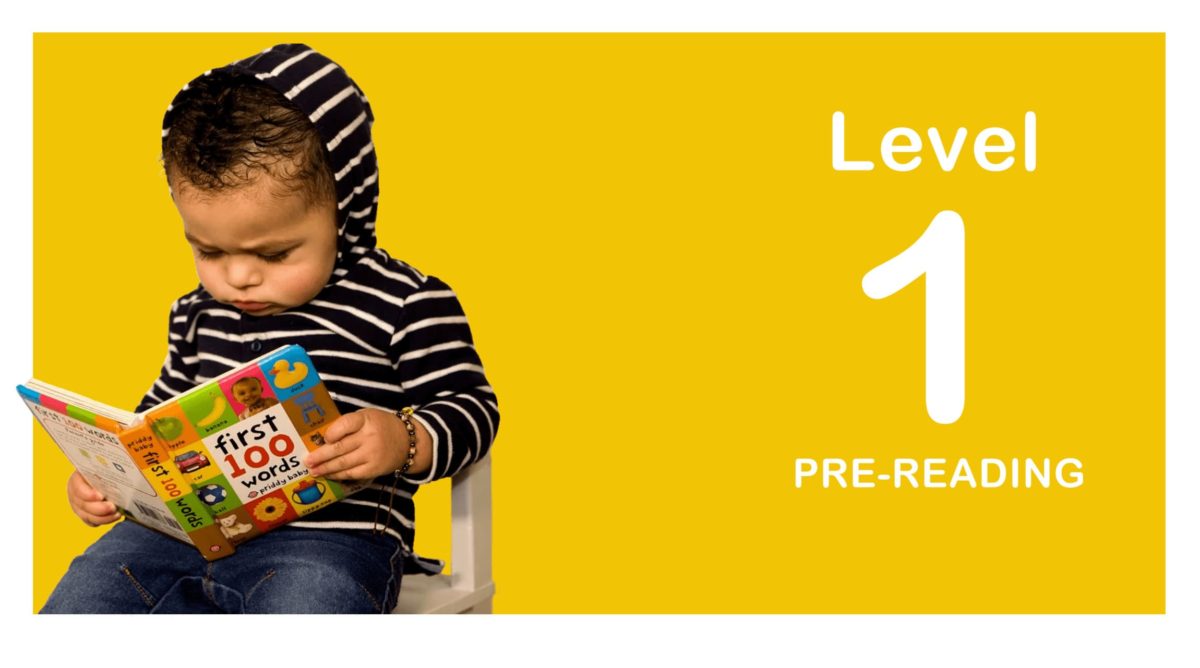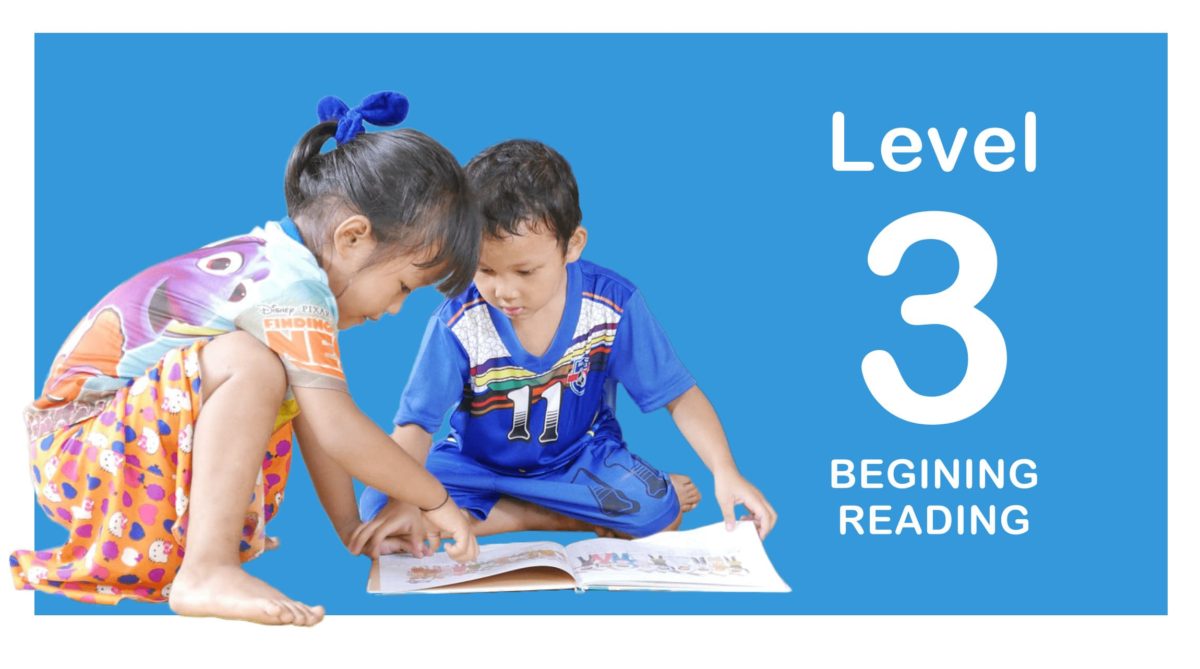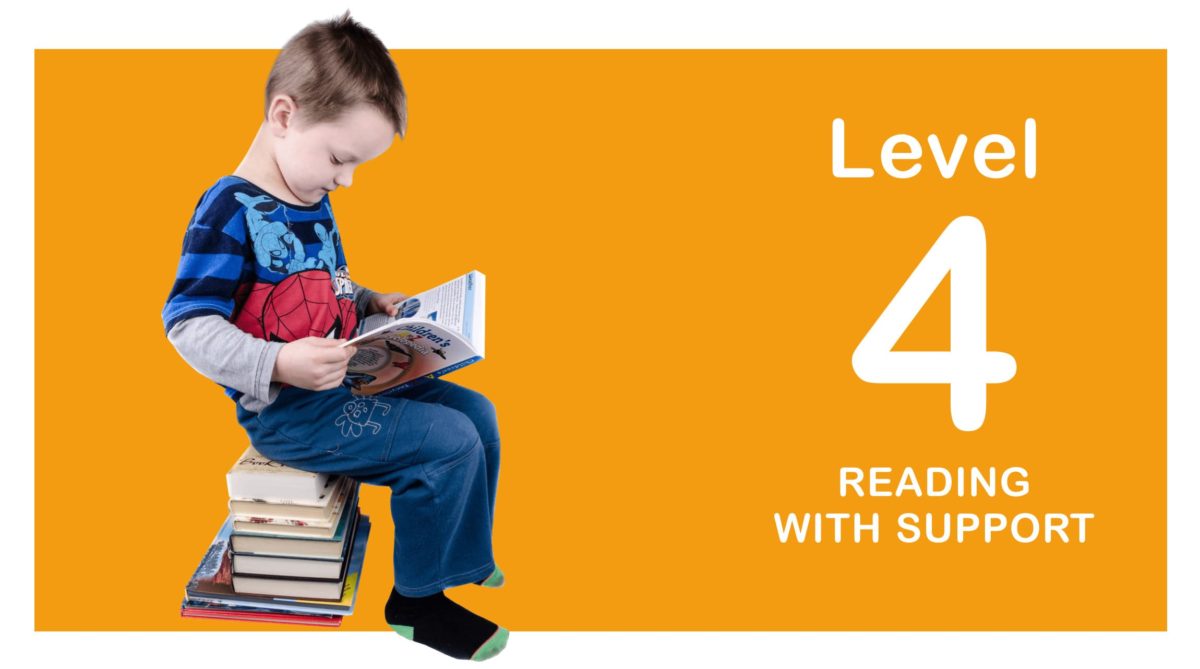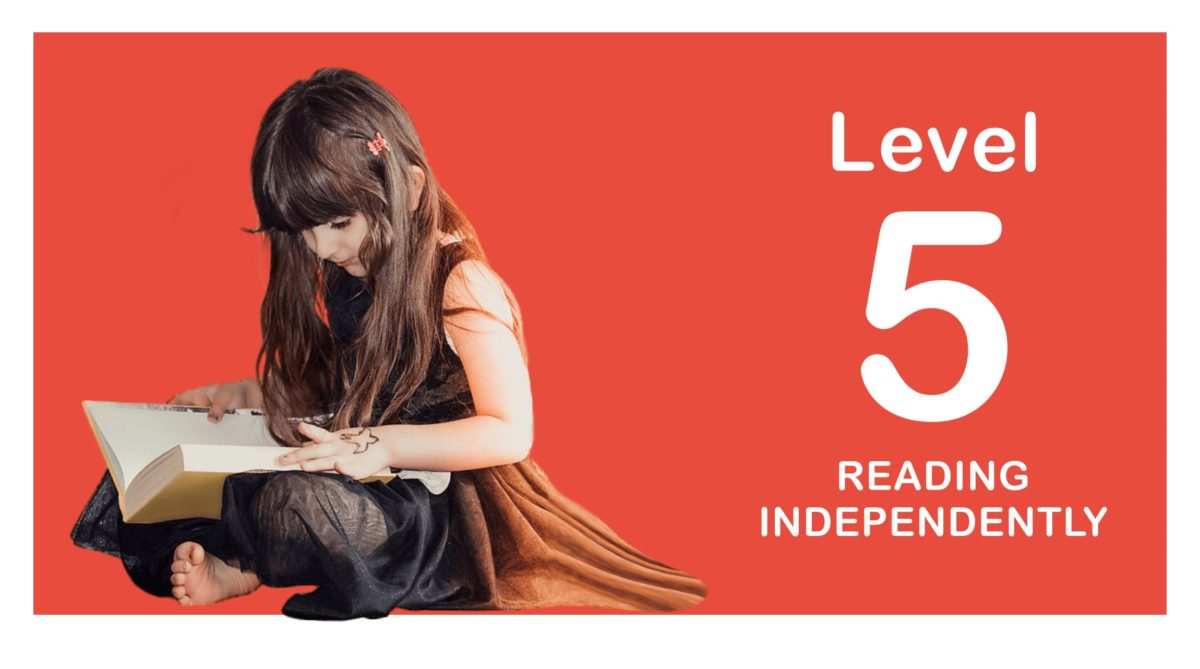I am starting to use letter sounds to read simple words.
Before children can begin to learn how to read, there are certain skills that they need to be introduced to:
- Print awareness — making the connection between printed letters and words and the ideas and stories they represent in a book
- Print motivation — finding interest in reading and books and how they work
- Telling a Narrative — telling stories about pictures builds on sequencing and vocabulary skills
At this stage it is important for children to understand how to use a book properly, from holding it right side up, to turning the pages appropriately and looking at them from left to right.
Colourful pictures accompanied by minimal text tell a story, encouraging children to use their vocabulary to describe what they can see. By the end of this stage, adults can begin to point to key words when saying them aloud, thereby creating the understanding that printed words have meaning.
Not sure where to start? Take our quiz to determine your child’s reading level.






